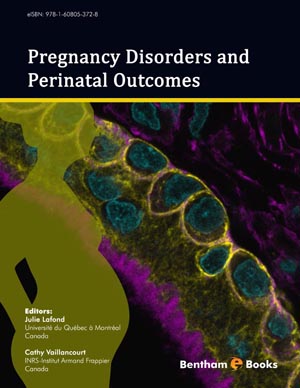Abstract
Preeclampsia, a disorder of pregnancy, is a leading cause of maternal and infant illness and death affecting about 3-15 % of all pregnancies worldwide. It is characterized by high blood pressure and the presence of protein in the urine. It originates in the placenta and causes variable maternal and fetal problems. At its worst, it may threaten maternal and perinatal survival. Preeclampsia is defined as a syndrome (a pattern of clinical features) and is probably heterogeneous in its origin as it is in its presentation. To date, the only complete cure known for preeclampsia is delivery, accompanied by the removal of the placenta. As the complete etiology of preeclampsia is still unknown, researches are crucial in order to know more about this pathophysiology and to develop different treatments and prediction approaches. This chapter focuses on current knowledge and recent discoveries on preeclampsia, especially on the role of placenta in its physiopathology. The chapter also presents current knowledge concerning preeclampsia diagnosis, epidemiology, risk factors and pathogenesis with an emphasis on maternal and perinatal outcomes related to this most common cause of death for both children and mothers during pregnancy.
Keywords: Preeclampsia, placenta, fetal development, maternal hypertension, proteinuria, trophoblast, intra-uterine growth restriction (IUGR).

















